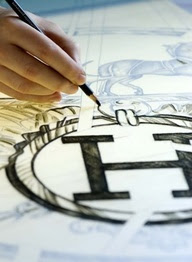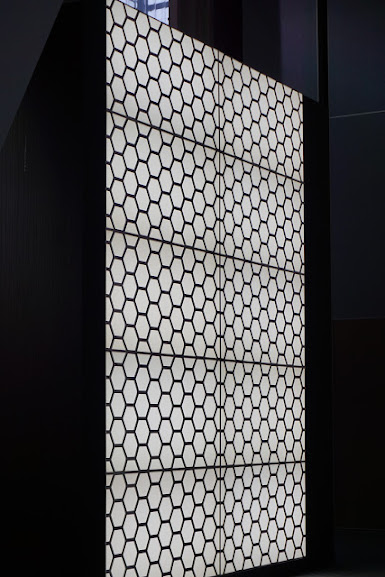Why In Design: Antique Belleek China from Ireland, Fokelore and Truth
What is Belleek Fine Parian China?
conical teapot with limpet pattern
third black mark, circa 1920-40s
"Belleek Pottery Ltd is a porcelain company that began trading in 1884 as the Belleek Pottery Works Company Ltd in Belleek, County Fermanagh, in what was to become Northern Ireland. The factory produces porcelain that is characterized by its thinness, slightly iridescent surface and that the body is formulated with a significant proportion of frit." - Wikipedia
Belleek factory in Ireland
I collect American pottery which has some similar traits to Belleek China, but this Beellek piece above, although resembling its American pottery cousin, and because it is porcelain, has a lighter, more delicate feel. The word "Parian" refers to fine white marble, which was mined in the town of Belleek in order to make the China.
This piece won a gold medal
at the L’Exposition de Paris Exhibition in 1900.
a bit of history about this pretty porcelain:
John Caldwell Bloomfield inherited his family's estate, Castlecaldwell in 1849 which included the entire village of Belleek. With the potato famine at the time, John intended to save the economy and after finding the town's soil to be rich in necessary materials to produce pottery (feldspar, kaolin, flint, clay and shale), he finagled the railroad to travel through Belleek, which enabled the economy to grow. Jobs were created when the factory was built. John traveled to England to find talented craftsmen and experienced potters. He lured them to Belleek with high wages, and he filled in with local workers who were also hired as young apprentices.
By the late 1800s the company had a stellar reputation with a growing market thoughout Europe and they were exporting pieces to the US, Canada and Australia as well. The porcelain was gaining notice by royalty as well, and it was featured for the first time at the Dublin Exposition of 1872.
the many stamps of Belleek over the years.
A law was passed that only a capital "B" signifies
the original, Irish-made Belleek
how to spot it...
referred to as "Belleek China" this porcelain was first made in Ireland, then other European countries, and eventually here in the US. It has a yellow-ish glaze, a creamy texture and glossy finish. First created in 1857 with a black marking (see logo above). Later, the marking included the words, Co. Fermanagh, Ireland, and some Deanta in Eirinn. Later, the marking was green instead of black, and some are even gold later during dates the 1980s and 1990s. In recent years there are blue and other color markings. In 2007, the company added "celebrating 150 years" to the porcelain markings. It is important to note, the word "Belleek" is used only for those pieces made in Ireland (and noting a capital B), although some of the earliest pieces were produced by Haviland, Lenox and others in other countries. The Factory is still open today, producing these quality wares.
visiting the Belleek factory when in Ireland
Where to find it...
You can find quality, inexpensive pieces online as well. Remember when purchasing it has a glossy finish and a natural, yellow-ish tint. Don't forget to check the stamp for authenticity on the bottom (remember, capital B is authentic Belleek, but there are some cute knock off pieces as well if you aren't concerned with provenance)
Happy Nesting
XO Tamara
sources: Kovel, Wikipedia, Belleek website, April's Luxury













